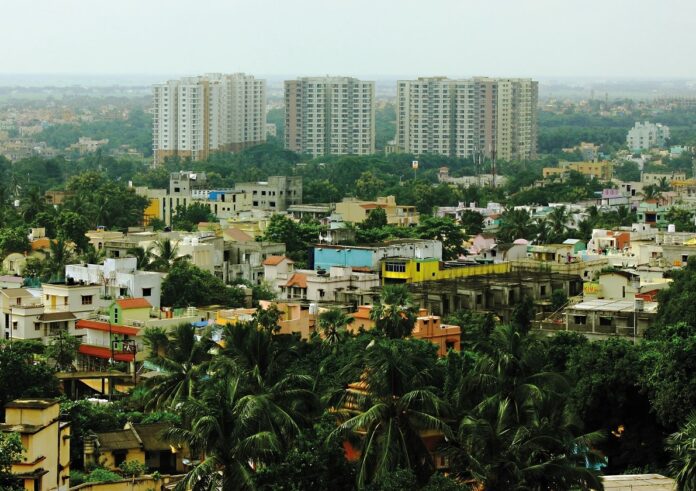IWA’s Inclusive Urban Sanitation initiative seeks to shift the agenda on sanitation in towns and cities around the world. Members of the initiative’s Advisory Board share perspectives and examples of the challenges and opportunities for achieving universal sanitation.
Yvonne Magawa, Executive secretary of the Eastern and Southern Africa Water and Sanitation Regulators Forum (ESAWAS)
 Improving access to and quality of sanitation services, alongside the supply of water for all, is the ultimate goal of Water Supply and Sanitation (WSS) regulation. Having recognised that most of the urban population relies on non-sewered sanitation, ESAWAS, as a network of WSS regulators, has begun a paradigm shift towards inclusive sanitation. In 2018, ESAWAS formulated a regulatory framework and strategy to incorporate non-sewered sanitation into regulation. This is now implemented in a number of countries.
Improving access to and quality of sanitation services, alongside the supply of water for all, is the ultimate goal of Water Supply and Sanitation (WSS) regulation. Having recognised that most of the urban population relies on non-sewered sanitation, ESAWAS, as a network of WSS regulators, has begun a paradigm shift towards inclusive sanitation. In 2018, ESAWAS formulated a regulatory framework and strategy to incorporate non-sewered sanitation into regulation. This is now implemented in a number of countries.
The IWA Inclusive Urban Sanitation (IUS) Programme provides ESAWAS with a podium to share and learn how to improve sanitation services with a holistic approach. There is still a long way to go, but the IUS allows lessons to be transposed through the sharing of knowledge across countries and continents, highlighting what is working and what can be adapted to different contexts. This is accelerating uptake of concepts that improve access and the quality of services.
At regional level in East and Southern Africa, countries are beginning to make a difference by organising the sanitation sector and improving accountability. Strong public data systems remain a key challenge for most countries to support effective decision-making, coupled with concerns with regards to resilience. The IUS is playing a strong role in highlighting these areas that need addressing. As ESAWAS, we will continue supporting global efforts to roll-out IUS, with the aim of achieving safely managed sanitation for all.
Sylvain Usher, Executive director of the African Water and Sanitation Association
 During decolonisation of most of the African countries in the 1960s, our newly designated heads of states were mainly concerned about giving access to potable water to the population of newly constructed cities, putting together potable water treatment plants and networks and creating the potable water utilities. Thinking about where the used water would go was not the main preoccupation so long as there was a river or sea where the wastewater could be disposed. No awareness was raised about the potential pollution of the environment.
During decolonisation of most of the African countries in the 1960s, our newly designated heads of states were mainly concerned about giving access to potable water to the population of newly constructed cities, putting together potable water treatment plants and networks and creating the potable water utilities. Thinking about where the used water would go was not the main preoccupation so long as there was a river or sea where the wastewater could be disposed. No awareness was raised about the potential pollution of the environment.
The beginnings of collective sanitation came about through the impetus of the hygiene movement, led by doctors and chemists that had established correlations between stagnant water and certain infectious diseases.
The first steps of sanitation consisted of the installation of ventilated underground piping systems to allow the rapid drainage of water out of urban areas without stagnation. These were the first unitary systems that would constitute the bulk of sanitation during the 1960s.
At the beginning of urbanisation during this period, there was slow migration to the cities, and the population was growing at a rapid pace. These circumstances meant that sanitation had to be taken more seriously.
The World Bank estimates that inadequate sanitation costs African countries billions of dollars each year in lost GDP. This has raised awareness at national-level.
The concept of inclusive urban sanitation is spreading across Africa. Its urgent implementation is required to avoid a hygiene calamity exacerbated by the consequences of climate change. But the concept must be better explained to government and authorities if they are to take serious action.
Neeta Pokhrel, Chief of Water Sector Group, Asian Development Bank, Philippines
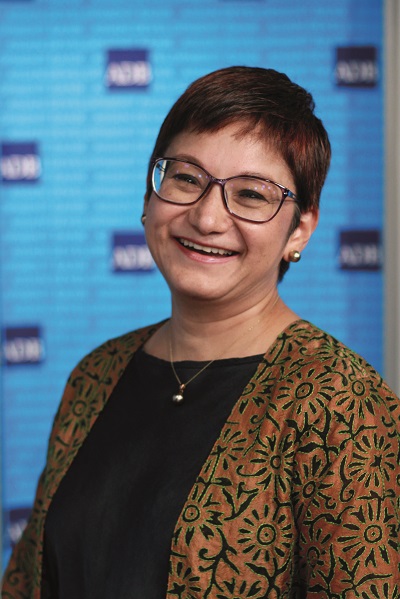 One of the challenges of delivering inclusive sanitation is that there is a very narrow focus on what sanitation means and looks like. Also, the drivers for sanitation are not being recognised by investors. The public are not putting politicians under pressure to invest in sanitation, and this is exacerbated by short political cycles. Because the demand is not there, the investment is not there.
One of the challenges of delivering inclusive sanitation is that there is a very narrow focus on what sanitation means and looks like. Also, the drivers for sanitation are not being recognised by investors. The public are not putting politicians under pressure to invest in sanitation, and this is exacerbated by short political cycles. Because the demand is not there, the investment is not there.
Investment depends on cost recovery. There is a leakage of funds, which creates a vicious circle, where there is a small pot of funds, which is wasting away because there is no cost recovery. This means that there aren’t the funds for further investment. These issues are pushing us back and slowing us down.
Sanitation for many people means investment in sewers. Sewers are costly and politicians don’t press for them because they would rather invest in more visible things, such as water supply, bridges, roads, and railways. But if the concept of sanitation was widened to improving health and improving septic tanks, for example, we could grab the low hanging fruit and sanitation wouldn’t just be about huge investment programmes.
Better planning is required to ensure that funds are used effectively. We need to invest in awareness and planning. The ministries, cities and stakeholders can all play a part. We need to recognise that there is a cost to not investing in sanitation. We need to make stakeholders aware of the economic losses from the health impacts of poor sanitation. We need to address this with a coherent message and explain to stakeholders what they can do.
There is a lot of talk. But our messaging needs to be consistent across the development space. There is very fragmented messaging. We need to give politicians a really clear guide. We need to join and work to build investment-ready plans. We need to work upstream to reduce the time that planning takes, so all partners can come together to make delivery easier and accelerate inclusive sanitation.
Thammarat Koottatep, Co-director of Global Water & Sanitation Center, AIT Thailand
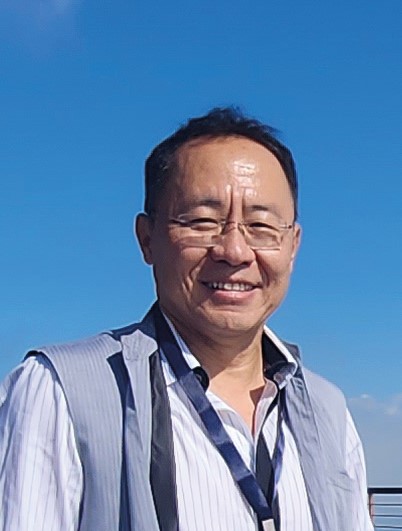 The United Nations (UN) has stated that the world is off-track to achieving universal safely managed sanitation by 2030. Progress is evident, but massive challenges remain in ensuring that wastewater treatment facilities are accessible and sustainable, and that discharged wastewater meets the required quality. Despite the challenges, there is a growing momentum where authorities, development partners and other stakeholders collaborate for inclusive sanitation.
The United Nations (UN) has stated that the world is off-track to achieving universal safely managed sanitation by 2030. Progress is evident, but massive challenges remain in ensuring that wastewater treatment facilities are accessible and sustainable, and that discharged wastewater meets the required quality. Despite the challenges, there is a growing momentum where authorities, development partners and other stakeholders collaborate for inclusive sanitation.
The inclusive sanitation service framework strengthens three core public system functions at local and national/state level essential for sanitation services delivery. Those are: 1) Responsibility: a clear public mandate, 2) Accountability: monitoring the performance of authorities against their mandate, 3) Resource planning and management, to effectively manage resources.
The goal is to achieve inclusive sanitation outcomes: 1) Equity: services that reflect fairness in distribution and prioritisation of services, 2) Safety: services that safeguard everyone from risks to safety and health, 3) Sustainability: services that are delivered reliably and continually.
The Global Water & Sanitation Center (GWSC) at the Asian Institute of Technology in Thailand has been actively promoting inclusive sanitation through its Technical Assistance Hub. In Madhya Pradesh, India, GWSC has helped to integrate citywide inclusive sanitation across the state’s planning, bidding, and budgeting system. This shift addresses social, economic, and environmental factors, laying a foundation for equity, safety, and sustainability. Tariff reduction strategies have been introduced promoting affordability for all residents, which eventually contributes to achieving universal coverage. The inclusion of urban poor is a significant indicator, as it ensures equitable access to sanitation facilities.
GWSC supports the government of Bangladesh in strengthening public data systems for sanitation in Bangladesh. Lack of data governance hinders the coordination of sanitation development efforts and data initiatives, leaving poor and vulnerable communities without access to water and sanitation services. The National Sanitation Dashboard data governance system will support planning and resources allocation where it’s needed, measuring performance of service delivery, and improving sector policy and regulatory reforms.
Another example is the Dhaka North City Corporation (DNCC) and the Water and Sewerage Authority (DWASA) in Bangladesh, which have reaffirmed their roles and accountability for delivering faecal sludge management within the city. Given the complexity of a mega city, Dhaka faces challenges in connecting every building to the sewer system and on-site sanitation containment. Both authorities have agreed on a scheduled desludging programme to ensure safety. DNCC oversees the emptying of septic tanks, transporting and disposal of waste to a wastewater treatment facility operated by DWASA.
The UN’s declaration that the world is off-track to achieving universal, safely managed sanitation is a reminder that we need to take the growing momentum for inclusive sanitation as an opportunity to secure functioning core public systems to address the issues that hinder equitable, safe, and sustainable sanitation services.
Item prepared with contributions from Kavinda Gunasekara, Chief Operating Officer, Isha Basyal, Deputy Chief Operating Officer, and Hendra Gupta, Knowledge Management Officer, all at GWSC.
Jennifer Molwantwa, Chief executive officer of the Water Research Commission in South Africa
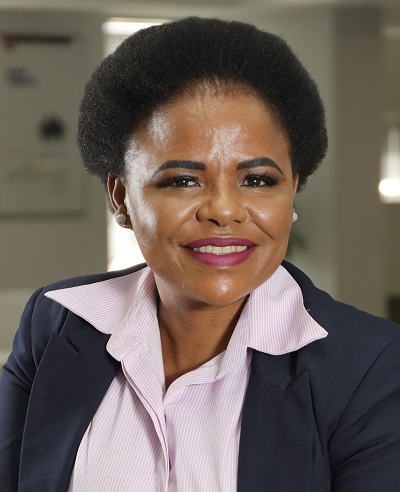 There are a number of challenges to be addressed to enable the delivery of inclusive sanitation, including the high cost of building infrastructure; the big gap in reaching the unserved with improved technology to achieve the sustainable development goals; the availability of water; and climate change. These form a complex problem that requires a multi-disciplinary approach to be tackled alongside other humanitarian challenges, including access to clean, good quality drinking water, housing and homes, and economic activation, alongside a consistent and cost-effective energy supply.
There are a number of challenges to be addressed to enable the delivery of inclusive sanitation, including the high cost of building infrastructure; the big gap in reaching the unserved with improved technology to achieve the sustainable development goals; the availability of water; and climate change. These form a complex problem that requires a multi-disciplinary approach to be tackled alongside other humanitarian challenges, including access to clean, good quality drinking water, housing and homes, and economic activation, alongside a consistent and cost-effective energy supply.
To address this, funding must be prioritised. Service providers must understand that a blanket approach will not be effective and so seek to find localised solutions that have been found to work and to be acceptable to recipients. Traditional and cultural factors need to be taken into account. With climate smart approaches, new innovations in sanitation can be adopted to carry nations into the future. Equitable access is also essential. While the approaches to delivering sanitation across regions may be different, the human experience must be the same for everyone.
The cost of catching up and redressing the inequalities between the served and unserved will be high. Existing systems will need to be optimised and new operations invented to improve sustainability, make solutions climate smart, and streamline operations and maintenance. A change in the governance of sanitation institutions is required to ensure that sanitation delivery is guided by technical specialists, rather than being part of a broader government department. Sanitation must also be depoliticised.
A technical, commercial type of institution that links water supply and sanitation as key human rights would help to drive change, along with the prioritisation of funding, and investment in the skills of highly technical experts, scientists, engineers, and social scientists.
Mathi Vathanan, Principal secretary of the government of Odisha in India
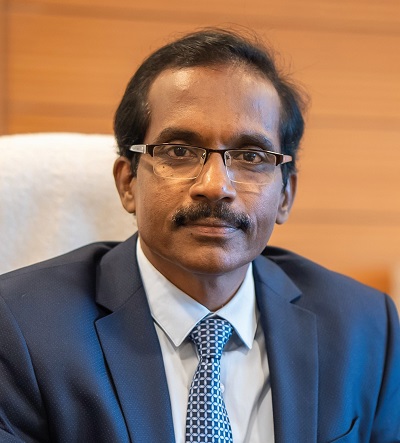 Odisha in Eastern India is the country’s eighth largest state by area and the 11th largest by population. In recent years the Odisha state government has worked hard to increase the availability and quality of WASH services in the state, with the aim of achieving city-wide inclusive sanitation (CWIS) that leaves no one out. The government’s policy puts people first, supporting the inclusion of women, transgender people, the urban poor, waste pickers and manual cleaners, and covers all sectors contributing to the delivery of sanitation services, including those managing water, solid and liquid waste, and storm water. The government is seeking to achieve sanitation delivery to cover the entire city area in all its cities, including formal and informal settlements, by securing tenure and implementing urban planning.
Odisha in Eastern India is the country’s eighth largest state by area and the 11th largest by population. In recent years the Odisha state government has worked hard to increase the availability and quality of WASH services in the state, with the aim of achieving city-wide inclusive sanitation (CWIS) that leaves no one out. The government’s policy puts people first, supporting the inclusion of women, transgender people, the urban poor, waste pickers and manual cleaners, and covers all sectors contributing to the delivery of sanitation services, including those managing water, solid and liquid waste, and storm water. The government is seeking to achieve sanitation delivery to cover the entire city area in all its cities, including formal and informal settlements, by securing tenure and implementing urban planning.
The city’s CWIS strategy covers the management and provision of tap water, faecal sludge and septage management, greywater management, decentralised solid waste management, the delivery of cluster and individual household toilets, and leveraging of grants under central and state finance commissions.
To ensure that the right to services is accessible to all sectors of society, the CWIS engages with women’s self-help groups (SHG) and the Slum Dwellers Association (SDA) to empower them to work at grassroots governance as service delivery partners.
Previously solid waste management (SWM) was poor, with a lack of door-to-door collection, source segregation of waste, or a sustainable model for waste management. Waste was managed on a contractor-driven centralised model, with high CAPEX and OPEX, high land requirement, and a ‘Truck and Dump’ approach, with low resource recovery. In contrast, the CWIS programme now achieves 98% collection of segregated waste, delivered to 250 wealth centres across the state, where 93% processing is achieved. With the aim of creating livelihoods and gender parity, 5061 women from 2650 SHG groups are employed across the Odisha SWM value chain for the operation and maintenance (O&M) of SWM assets and service delivery, with 80% of O&M costs going towards wages and incentives for the women from SHGs.
Sanitation workers are organised into groups, with priority given to the safety, dignity, and welfare of workers in the SWM chain. Attention is given to capacity building and the welfare of community partners is supported with the provision of a comfortable workplace lounge, timely payments, uniform, and safety equipment. This waste to wealth model is low tech and scalable, requires much less land than the centralised model, is sustainable and enables data management to support information communication technology tools.
Odisha’s faecal sludge management (FSM) adopts low tech, decentralised, non-sewered, nature-based systems for community led operations of treatment facilities, which are 100% operated and managed by women from SHGs and transgender groups.
In addition to empowering the community, the CWIS programme has improved the environment. In 2017, 19 river stretches were reported to be polluted. In 2022, 12 river stretches were reported as clean, and six river stretches moved from ‘highly polluted’ to ‘marginalised polluted’ status.
A decentralised greywater management system operates as part of a community partnership, incorporating constructed wetlands and lane level trench structures.
Odisha’s Jaga Mission, which is working for the slum dwellers, is empowering people living in informal settlements by granting in situ land rights to residents to mitigate the threat of forced evictions, with 226,000 land rights issued so far. Infrastructure has been upgraded to improve living conditions, with 98% coverage of in-house tap water, 100% coverage of in-house electricity and 87% provision of household toilets. All services are to be extended until saturation is achieved. SDAs are financially empowered for O&M services and SDAs now represent the fourth tier of governance.
Margaret Maina, Managing director of Limuru Water and Sewerage Company, Kenya
 Inclusive urban sanitation (IUS) is crucial for cities to provide access to safely managed sanitation in respect to the sanitation value chain. It provides a variety of sanitation solutions to major cities and urban areas where sewered sanitation coverage is unviable due to numerous challenges such as financial constraints, unfavourable topography, and land tenure issues. According to the Impact 15 report by the Water Service Regulatory Board (WASREB), 16% of the Kenyan population have access to sewer connections. Based on these statistics, there is a need to provide alternatives to non-sewered sanitation that incorporates the full sanitation value chain. This will ensure that every Kenyan in urban areas has access to safely managed sanitation, which translates to improved hygiene and public health, ultimately ridding the population of water-related diseases.
Inclusive urban sanitation (IUS) is crucial for cities to provide access to safely managed sanitation in respect to the sanitation value chain. It provides a variety of sanitation solutions to major cities and urban areas where sewered sanitation coverage is unviable due to numerous challenges such as financial constraints, unfavourable topography, and land tenure issues. According to the Impact 15 report by the Water Service Regulatory Board (WASREB), 16% of the Kenyan population have access to sewer connections. Based on these statistics, there is a need to provide alternatives to non-sewered sanitation that incorporates the full sanitation value chain. This will ensure that every Kenyan in urban areas has access to safely managed sanitation, which translates to improved hygiene and public health, ultimately ridding the population of water-related diseases.
Opportunities are many in IUS, since it incorporates different key stakeholders, especially the private sector. This creates an alternative source of funding, innovation, and collaboration between different players, especially considering that 75% of water used in a household is wastewater. There is also an opportunity to recover valuable products from faecal sludge, thus earning revenue from waste.
The greatest challenge in the WASH sector is that sanitation is less prioritised than water. Additionally, the perception of informal sanitation in Low Income Areas is poor and disconnected from the sanitation value chain. More so, there are no standard operating procedures or curriculums that can be used by manual pit workers, who are the main service providers in informal settlements. l
For more information on IWA’s Inclusive Urban Sanitation initiative, including the new Inclusive Urban Sanitation
Champions programme, see https://iwa-network.org/projects/inclusive-sanitation/


